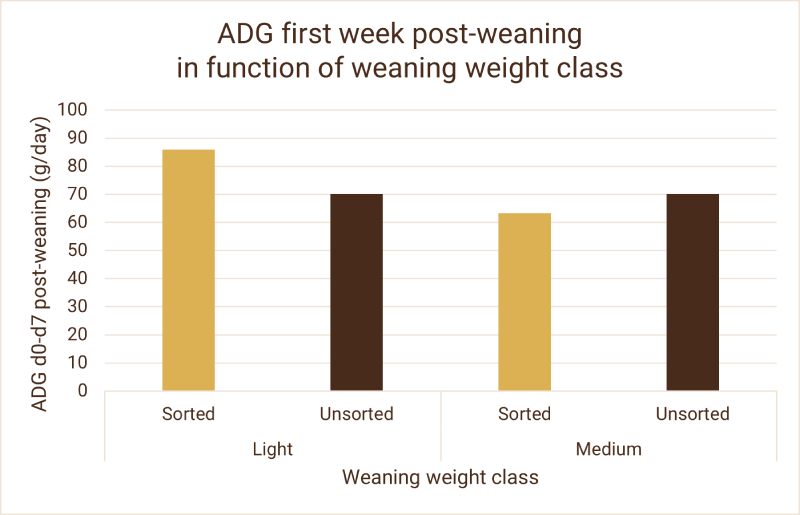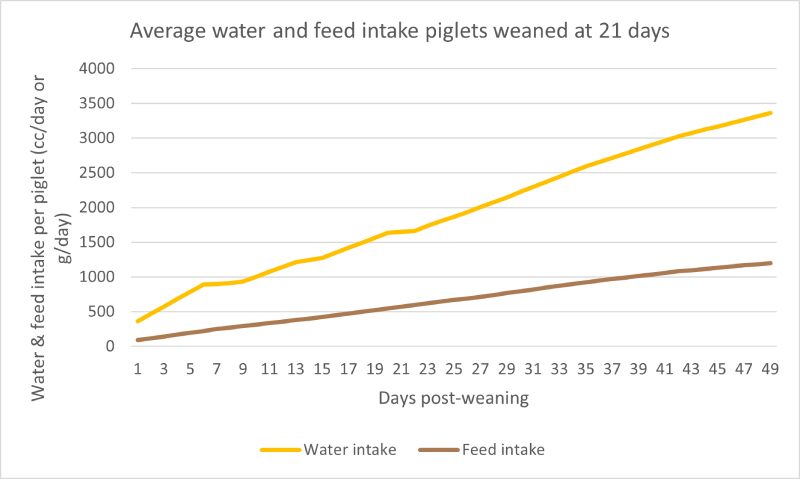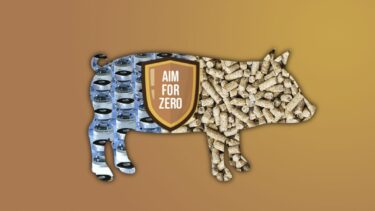Aim for zero: FREQUENTLY ASKED QUESTIONS and answers about going zinc free
In the past, farmers could use medicated zinc to cope with weaning stressors: limited colostrum availability, a still-developing gut microbiome, risk of toxins, exposure to pathogens, and a prevalence of free radicals to name a few. All these stressors could potentially have a huge impact on the health and performance of the piglets. However, this rearing method has come to an end in Europe and the rest of the world will likely follow. With this transition are many questions on how to support piglet health without medicated zinc. With years of experience raising piglets without medicated zinc, Earlyfeed provides detailed answers to 3 frequently asked questions within Europe.
- How can we minimize weaning stress?
- Piglets are not eating in the farrowing crates. What should we do?
- How can I encourage piglets to drink enough water?
1. How can we minimize weaning stress?
With changes in the environment and diet, piglets experience a lot of stress which will have a negative influence on the weaning period:
Common forms of stress around weaning

To minimize this weaning stress you have to minimize the degree of change. For example, to reduce the changes in environment, we advise to avoid excessive mixing of litters. Nowadays, the average size of the pen is designed so that it is almost impossible not to mix litters. Therefore, the Earlyfeed team advises the following:
- Split the litter into three groups of piglets: small – normal – heavy
- From a limited number of litters, combine the piglets from each weight category together
- In addition, place the smaller piglets in a pen that you frequently see as you enter the barn. Also, ensure the pen is in a location with an optimal climate
By splitting piglets into different groups, you are able to feed them according to their needs. For example, by sorting, you can feed the smaller piglets extra in a separate bowl. This will ensure all piglets are eating enough without having the hierarchy stress of heavier piglets present. This will pay off immediately (Figure 1).

2. Piglets are not eating in the farrowing crates. What should we do?
Several factors influence the eating behavior of piglets in the farrowing room. First, you should find out why the piglets are not eating. Good things to check include:
- How many piglets are under the sow?
- Where is the feeder placed?
- How many times do you feed per day, and how much?
- How and where is the feed stored?
- Do they have fresh water?
- Which treatments have the piglets received?
- How is the climate?
Within this question are many factors and your Earlyfeed expert can provide appropriate advice for your farm. A few answers to the above points include:
- Where is the feed placed?
By placing the feeder near water, piglets learn both to drink and eat. It is also crucial to not put the feeder under the heating lamp, as this will make the feed warm and stale and will not attract the piglets to eat. - How many times do you feed per day, and how much?
It is better to feed the piglets multiple times per day. The amount of feed you provide per piglet depends on the piglet’s age. It is better to start with a small amount and increase the volume smoothly based on age.

- How and where is the feed stored?
Creep feed always contains an aroma to attract the piglets towards the feeders. If not in a closed bag, the aroma will dissipate/fade and no longer draw the piglets to the feed. It is recommended to store the closed bag outside the farrowing room where it is typically cooler to retain the product’s freshness.

3. How can I encourage piglets to drink enough water?
Supporting many essential functions, water is a very important nutrient for weaned piglets. It helps with:
- Regulating body temperature
- Transporting nutrients around the body
- Removing toxins and helps with filtration
- Aiding digestion
- Lubricating and protecting the body’s organs
For the first three days post-weaning, proper water intake is desired above feed intake. This is because it is hard to have sufficient feed intake without water. A good way of thinking about the importance of water is by considering what it would be like to eat six salty crackers at once without drinking water. In general, the water-to-feed ratio the first-week post-weaning should be 4:1. This number should decline every week towards 3.2:1 in the fourth-week post-weaning and should be a 3:1 at the end of the nursery period (Figure 2).

To assure sufficient water intake post-weaning, check the following items:
- Type of drinker:
Depending on the type of drinker, some additional measures should be taken the first days post-weaning, such as adding an extra bowl with water, extending the drinking pipe to make it easily accessible for the piglets, etc. - Number of piglets per nipple:
The maximum number of piglets per drinking nipple in the nursery is 10. - Temperature:
In general the drinking water temperature for piglets post-weaning should not be lower than 15°C, but this minimum level can be adapted depending on the season. - Quality:
There are several factors influencing water quality including pH, microbiology, salts, etc. - Flow rate:
Concerning the flow rate, it is best to ensure it matches the advised flow rate in correlation with the advised amount of water intake per day (Table 1).
| Animal category | Liters/minute | Liters/day |
| Piglets during lactation | 0.3 | 0.5 – 1.0 |
| Weaned piglets: | ||
| 5 kg | 0.5 | 0.7 |
| 10 kg | 1.0 | |
| 20 kg | 2.0 |
Each of these topics influences the water intake accordingly. To get to know more about the other influencing parameters on water intake, please contact with your local Earlyfeed expert. As we have successfully helped producers transition to a zinc-free environment, our Earlyfeed experts received plenty of questions on how to remove medicated zinc without increasing the use of antibiotics. In addition to the questions here, we also know many are struggling with the following question too:
- Should I change the feeding schedule of the piglets?
- Will a different particle size help with gut health? If so, meal, pellet, or crumble?
- Can I replace zinc with something else?
- What changes to the environment, specifically temperature, should I make?
If you are looking for an answer to any of these questions or have another question, contact your local Earlyfeed expert and we will be happy to help you find the answer.
This contact was suggested based on the location you are browsing from. You can of course also consult our other contacts and locations here.

